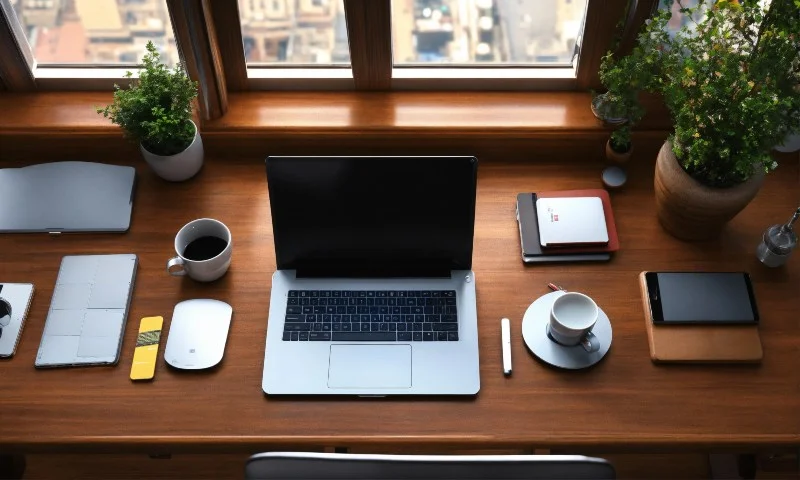Sick of sitting all day long? Say goodbye to the sedentary lifestyle and make way for the standing revolution! Standing desks are gaining popularity in offices and homes alike, promising increased productivity and improved health. But before you jump on the bandwagon and start standing tall.
The main aim of this article is to provide practical tips and guidance for individuals transitioning from a traditional sitting desk to a standing desk in their office or home environment. It aims to help readers transition smoothly, comfortably, and effectively while maximizing the potential benefits of using a standing desk.
People should read this article if they:
- Are you considering switching to a standing desk due to health or productivity concerns associated with prolonged sitting?
- I have recently acquired a standing desk and need advice on adjusting to this new setup gradually and ergonomically.
- Want to learn strategies for incorporating movement, proper posture, and regular breaks into their standing desk routine?
- Seek tips on selecting the right standing desk equipment, such as desk height, footwear, and anti-fatigue mats, to ensure comfort and avoid strain.
- Desire real-life examples and insights from others who have successfully transitioned to a standing desk.
Here are 15 clever tips to make your transition to a standing desk seamless and enjoyable.

Take it slow
- Take your time with standing for long periods.
- Start with shorter standing sessions, such as 20-30 minutes at a time.
Invest in a quality standing desk
- Opt for an adjustable standing desk to switch between sitting and standing positions.
- Avoid cheap or low-quality desks that may not provide proper ergonomic support.
Find your ideal height
- Adjust the desk height so your elbows are at a 90-degree angle when typing.
- Experiment with different heights until you find the perfect fit for your body.
Get the right footwear
- Wear comfortable, supportive shoes with good cushioning and arch support.
- Avoid high heels or flat shoes, which can cause discomfort when standing for long periods.
- Consider investing in anti-fatigue mats to provide additional cushioning for your feet.
Rock the good posture
- Maintain proper posture by keeping your shoulders relaxed, your back straight, and your core engaged.
- Avoid slouching or hunching over, as this can lead to strain and discomfort.
Stretch it out
- Incorporate simple stretches and movements throughout the day to keep your body active.
- Suggestions include calf raises, mini squats, or dancing to your favorite tunes.
- Moving around will help prevent stiffness and improve circulation.
Create a standing routine
- Establish a routine that alternates between standing and sitting intervals.
- Experiment with different patterns, such as standing for 30 minutes and then sitting for 15 minutes.
- Find the routine that works best for your productivity levels and comfort.
Sway to the beat
- Use a balance board or footrest to engage your leg muscles and encourage movement.
- Swaying or shifting your weight can help prevent fatigue and promote active standing.
Be a rebel, but wisely
- Try standing during meetings or phone calls to break up the routine and stay alert.
- However, know your limits and sit if you feel tired or uncomfortable.
Add some color to your surroundings
- Surround yourself with vibrant colors and decorative items that inspire and uplift your workspace.
- Creating an enjoyable and visually appealing environment can boost motivation and productivity.
Take frequent breaks
- Remember to give your body rest by taking short breaks throughout the day.
- Use these breaks to stretch, walk, or even take a power nap.
- Regular breaks help prevent fatigue and maintain energy levels.
Stay hydrated
- Proper hydration can help boost focus and keep you feeling fresh.
Don’t forget about ergonomics
- Invest in an ergonomic chair for when you need to sit.
- Ensure your keyboard, mouse, and monitor align for maximum comfort.
- Ergonomics is essential for maintaining good posture and preventing strain.
Engage in active sitting
- Try using an exercise ball or kneeling chair if standing becomes tiring or uncomfortable.
- These alternatives promote active sitting and provide relief from prolonged standing.
Listen to your body
- Ultimately, your body will tell you if standing is the right option.
- If standing becomes too painful or causes discomfort, it may not be the best choice.
By following these 15 tips and incorporating additional clarification, individuals can make a smoother and more comfortable transition to using a standing desk in their work environment while maximizing the potential benefits and minimizing the risk of discomfort or strain.
Examples

- A software developer, Sarah, had been experiencing back pain and fatigue from sitting at her desk for long hours. After reading the article’s recommendations, she invested in an adjustable standing desk and slowly increased her standing time over several weeks. She also incorporated stretching exercises and used an anti-fatigue mat to support her feet. Sarah noticed a significant improvement in her energy levels and reduced back discomfort.
- As a marketing professional, John struggled with transitioning to his new standing desk setup. Following the article’s advice, he experimented with different standing and sitting intervals until he found a routine that worked best for his productivity and comfort. He also invested in ergonomic accessories, such as a footrest and a monitor arm, to maintain proper posture and alignment.
- A freelance writer, Emily had been hesitant about switching to a standing desk due to concerns about fatigue and discomfort. However, after implementing the tips from the article, such as wearing supportive footwear, creating a standing routine, and taking frequent breaks, she found that she could work comfortably while standing for extended periods. Emily also noticed an improvement in her focus and concentration.
People, Also Search
How long should I stand at my standing desk when starting?
- It’s recommended to start with shorter standing periods, such as 20-30 minutes, and gradually increase your standing time over several weeks as your body adjusts.
What kind of footwear is appropriate for standing desks?
- Supportive shoes with good cushioning and arch support are ideal for standing desks. Avoid high heels or flat shoes that can cause discomfort. Anti-fatigue mats can also provide additional cushioning and relief for your feet.
Is it necessary to have an adjustable standing desk?
- While not strictly required, an adjustable standing desk that allows you to switch between sitting and standing positions is highly recommended. This versatility helps prevent fatigue and accommodates different tasks or preferences.
How can I maintain proper posture while standing?
- Maintain a neutral spine alignment, keep your shoulders relaxed, and position your computer screen at eye level. Incorporate stretching exercises, use a footrest or balance board, and take regular breaks to avoid strain.
Can standing desks benefit everyone, or are there exceptions?
- Standing desks may not be suitable for individuals with certain medical conditions or physical limitations. It’s always advisable to consult with a healthcare professional before making significant changes to your work setup, especially if you have pre-existing conditions or concerns.
By providing real-life examples and addressing common questions, readers can better understand the practical applications of the tips outlined in the article and make an informed decision about transitioning to a standing desk setup that suits their needs and preferences.
Conclusion
Standing desks are here to stay as the healthier and more active alternative to traditional sitting desks. By following these 15 practical tips that ease you into a standing routine, prioritize ergonomic equipment, promote movement and proper posture, and, most importantly, listen to your body’s needs – you’ll be well on your way to embracing the standing lifestyle wholeheartedly. So stand tall, move often, and breathe new life into your workday. The standing revolution awaits!
